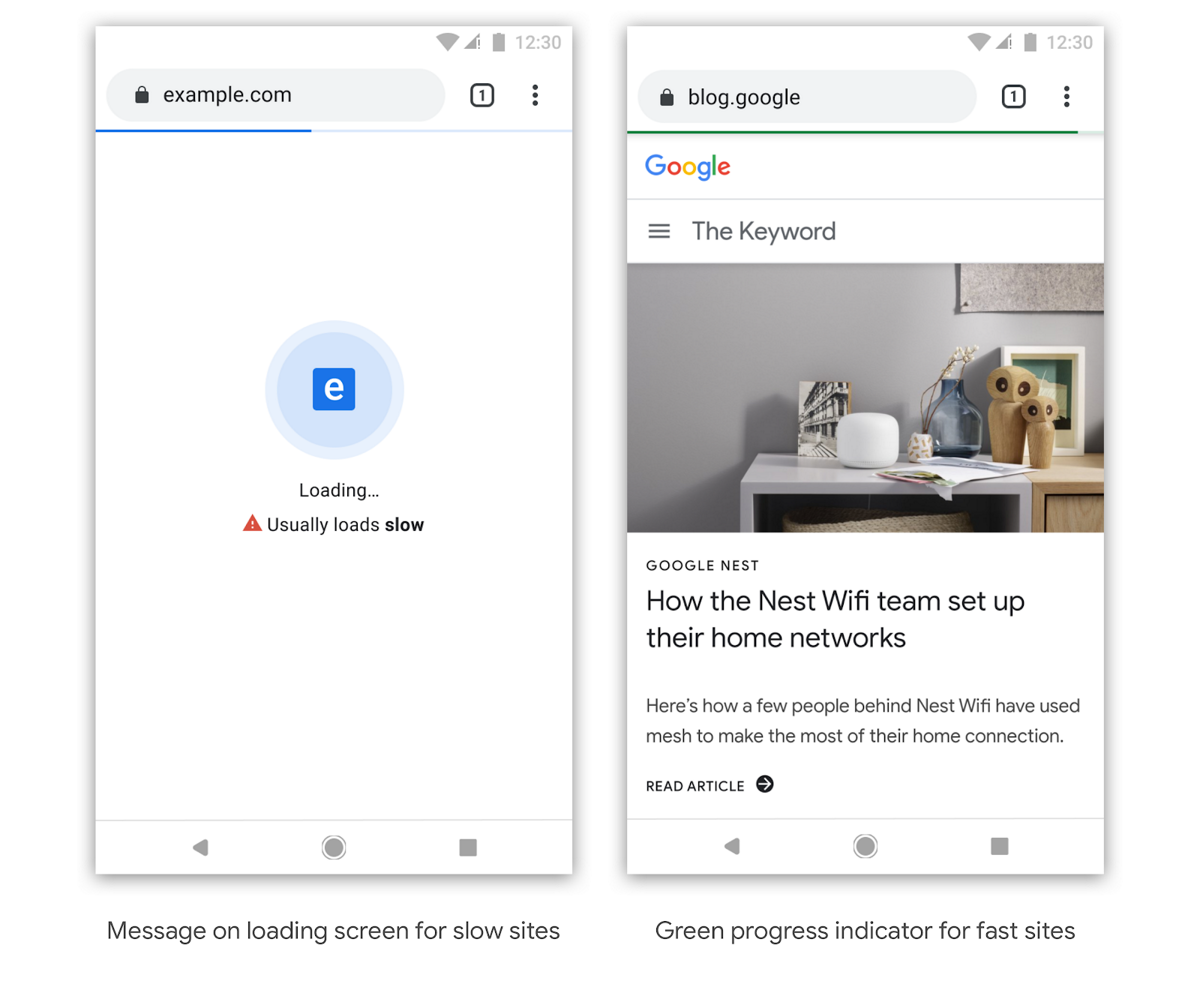
Few days ago Google proposed an initiative to stimulate the increase in speed load of sites on the web, for which plan to include special flags in Chrome that highlight very slow loading sites or on the contrary, very fast. Since at the moment it has only entered as an initiative methods for indicating fast and slow sites have yet to be determined and the optimal option for users will be selected over the course of several experiments.
For example, if a site generally loads slowly due to the use of inefficient settings or problems with the organization of the load or during the opening process or while the user waits for the content to appear, a flag may be displayed indicating that this site generally loads slowly.
The notification will allow the user to understand that the delay stops the site being opened is in the order of things and not due to a single flaw. For well optimized and very fast opening sites, it is suggested to highlight a green bar that shows the download progress.
Also consider providing information on page download speed that are not yet open, for example by displaying an indicator in the context menu of links.
Speed has been one of Chrome's core principles from the beginning - we are constantly working to provide users with an instant experience while browsing the web. With that said, we've all visited web pages that we thought would load quickly, only to come across an experience that could have been better. We believe the web can perform better, and we want to help users understand when a site may load slowly, while also rewarding sites that offer fast experiences.
In the future, Chrome may identify sites that typically load fast or slow for users with clear badges. This can take a number of forms and we plan to experiment with different options, to determine which one provides the most value to our users.
The indicators will not reflect the download speed in a specific situation, but the summary indicators specific to the site that is being opened. The goal is to highlight poorly designed sites that are loading slowly, not due to a combination of circumstances, but due to poor work organization.
The identification aims to identify when sites are created in a way that makes them slower overall, by looking at historical upload latencies. Later, we can expand this to include identifying when a page is likely to be slow for a user based on their device and network conditions.
In the first stage, the marking criteria will be the presence of constant download delays observed when analyzing work history with the site.
In the future, it will be possible to identify specific slowdown situations, manifested in certain types of devices or network configurations. In the long term, it is planned to take into account other performance indicators that affect the comfort of working with the site, not linked to the download speed.
Our first few scans will analyze various surfaces of Chrome, including the loading screen (home screen), the loading progress bar, and the context menu for links. The latter could allow an idea of typical site speeds so that you are aware before browsing.
With this initiative, Google encourages website developers to use available tools to optimize download speed, such as PageSpeed Insights and Lighthouse.
Since these tools allow web developers to analyze various aspects of web page loading, estimate resource consumption and determine resource-intensive operations in JavaScript code that block output formation, and then develop recommendations for the acceleration and optimization.
Source: https://blog.chromium.org